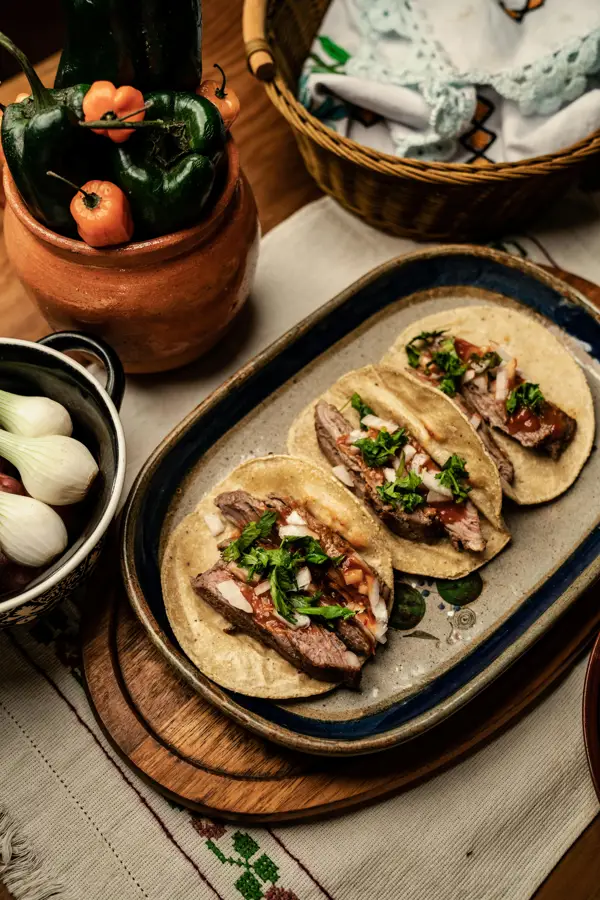Authentic Mexican Horchata is far more than just a refreshing beverage; it’s a deeply rooted cultural symbol with a history as rich and complex as its flavor profile. Originating in the Iberian Peninsula, horchata’s journey to Mexico is intertwined with the Spanish conquest in the 16th century. While the original horchata was made from tiger nuts (chufa), the Mexican version underwent a significant transformation, adapting to the readily available ingredients of the New World. This adaptation, a testament to the ingenuity and resourcefulness of Mexican culinary traditions, cemented horchata’s place in the nation’s gastronomic landscape.
The transition from tiger nut to rice as the primary ingredient was a key moment in horchata’s evolution in Mexico. Rice, abundant and readily cultivated, allowed for widespread production and consumption, making it accessible to a broader population. This shift not only altered the texture and subtly the flavor, but it also broadened the drink’s appeal. Today, the vast majority of Mexican horchata recipes rely on rice, though variations using other grains like barley or even almonds continue to exist, reflecting the ongoing evolution of this beloved drink.
Beyond its adaptation, horchata’s cultural significance in Mexico is undeniable. It’s an integral part of countless celebrations, from family gatherings and religious festivities to vibrant street markets and bustling restaurants. It’s often served alongside traditional Mexican dishes, perfectly complementing the spiciness of many regional specialties. Its popularity is truly widespread; you’ll find horchata sold everywhere, from humble street vendors to upscale restaurants, a testament to its enduring appeal across socioeconomic strata. While precise consumption statistics are difficult to obtain, its ubiquitous presence suggests it’s one of the most consumed beverages in Mexico, holding a position comparable to, or even surpassing, that of other popular drinks.
The preparation itself is a testament to Mexican culinary traditions, emphasizing simple, fresh ingredients and a process that highlights the natural sweetness and creamy texture of the rice. The careful balance of rice, water, cinnamon, and sugar, sometimes enhanced with vanilla or other spices, results in a beverage that is both comforting and invigorating. This seemingly simple drink holds a complex history, reflecting centuries of cultural exchange and adaptation, making it a truly iconic representation of Mexican culinary heritage and a perfect example of how a beverage can transcend its origins to become deeply embedded in a nation’s identity.
Ingredients and Measurements for Authentic Mexican Horchata
Creating the perfect Mexican Horchata hinges on using high-quality ingredients and precise measurements. This recipe yields approximately 8 servings of refreshing horchata.
Rice: We’ll start with 1 cup of raw, uncooked white rice. Avoid using instant rice, as it lacks the necessary starch to create the creamy texture characteristic of authentic horchata. Using long-grain white rice is recommended for its optimal starch release. Before starting, rinse the rice thoroughly under cold running water for at least 30 seconds to remove any excess starch or impurities. This step is crucial for preventing a gritty texture in your final horchata.
Water: You will need 4 cups of filtered or bottled water for the initial soaking and cooking process. Using filtered water is recommended to avoid any off-flavors that might be present in tap water. Tap water can sometimes contain minerals that may affect the taste of your horchata. You’ll also need an additional 4 cups of water for blending and diluting the rice mixture to achieve the desired consistency.
Cinnamon Sticks: Use 2-3 whole cinnamon sticks, depending on your preferred level of cinnamon intensity. Mexican cinnamon (Canela) is highly recommended for its unique, warm, and slightly sweet flavor profile, which is integral to the traditional horchata taste. Break the cinnamon sticks into smaller pieces to maximize their flavor extraction during the simmering process.
Sugar: The sweetness of your horchata is entirely customizable, but we recommend starting with 1 cup of granulated white sugar. This amount provides a good balance of sweetness, allowing you to adjust according to your preference. You can easily reduce or increase the sugar quantity based on your taste. Taste and adjust the sweetness after blending to ensure the perfect balance. You might prefer using a combination of granulated and brown sugar to add a subtle depth of flavor.
Milk: 2 cups of whole milk are used to add richness and creaminess. Whole milk is preferred over skim or 2% milk for its superior texture and flavor contribution. Alternatively, you can use evaporated milk or even a plant-based milk alternative like almond milk or oat milk, however, the taste and texture might slightly differ from the traditional recipe.
Vanilla Extract: A teaspoon of pure vanilla extract is added to enhance the overall flavor profile. Use high-quality vanilla extract, as it will significantly impact the final flavor of your horchata. A good quality vanilla extract adds complexity and depth to the drink.
Optional additions: Consider adding a pinch of ground nutmeg or a few cardamom pods for a more complex, spiced horchata. Experiment with different additions to create your signature horchata recipe.
Important Note: All measurements are approximate. Feel free to adjust the ingredients based on your personal preferences and taste.
Equipment List
Making authentic Mexican horchata requires specific equipment to ensure optimal results and a smooth process. While some items might seem interchangeable, using the right tools will significantly impact the texture, flavor, and overall quality of your horchata. This list details the essential equipment, along with recommendations for achieving professional-level results.
Rice Preparation: For perfectly cooked rice, a medium-sized saucepan (approximately 2-quart capacity) is ideal. This size provides ample space for the rice to cook evenly without sticking or burning. Avoid using non-stick pans for rice cooking, as the non-stick coating can degrade over time with high heat and prolonged exposure to water. A sturdy wooden spoon or spatula is crucial for stirring the rice during cooking to prevent sticking and ensure uniform texture. A fine-mesh sieve or strainer (at least 8-inch diameter) is essential for separating the cooked rice from the cooking water. This allows for a smoother, less grainy final product.
Blending and Straining: A high-powered blender (at least 1.5-horsepower) is recommended. A less powerful blender may struggle to properly break down the rice and create a smooth, creamy texture. Ensure your blender is large enough to accommodate the volume of the horchata mixture (at least 64 ounces capacity). A high-quality blender will also minimize the need for repeated blending cycles. For a remarkably smooth horchata, consider using a fine-mesh cheesecloth or a nut milk bag (at least 24”x24”) for straining the blended mixture. This double straining process removes any remaining rice particles, resulting in a flawlessly smooth texture. A large (at least 4-quart) bowl is necessary to hold the blended mixture before straining.
Chilling and Serving: A large glass pitcher (at least 64 ounces) is perfect for chilling and storing the horchata. Glass is preferable to plastic because it doesn’t retain odors or impart any flavors to the beverage. A refrigerator with sufficient space to accommodate the pitcher is essential for proper chilling. For serving, consider using individual glasses (8-10 ounce capacity) with a wide mouth for easy pouring and enjoyment. A small measuring cup (at least 1 cup capacity) is helpful for accurate measurements when adding ingredients like sugar and cinnamon. Finally, a cinnamon stick (approximately 4-inches long) can be used for garnish, adding visual appeal and subtle flavor enhancement.
Optional but Recommended: An immersion blender can be a valuable addition for creating a smoother mixture before the final straining. This can reduce the workload on your main blender and result in a more consistently smooth texture. A kitchen scale allows for precise measurements of ingredients, especially sugar, leading to a more consistent horchata flavor profile. Finally, a clean, damp cloth is useful for wiping down spills and keeping your workspace tidy.
Cleaning and Maintenance: Remember to clean all equipment thoroughly after use, especially the blender and strainer. Prompt cleaning prevents the build-up of rice residue and ensures the longevity of your equipment.
Preparation of Rice (Soaking and Rinsing)
The foundation of a truly exceptional horchata lies in properly prepared rice. While some recipes skip this crucial step, soaking and rinsing your rice significantly enhances the flavor and texture of your final beverage. This process helps the rice release its starches more effectively, resulting in a richer, creamier horchata. We’ll be using 1 cup of long-grain white rice for this recipe, but you can adjust the quantity based on your desired yield.
Begin by measuring out 1 cup of long-grain white rice. Avoid using instant rice or other varieties, as they won’t yield the same creamy texture. Long-grain white rice offers the best balance of flavor and texture for horchata. Make sure to use a measuring cup designed for dry ingredients, not a liquid measuring cup, to ensure accuracy.
Next, rinse the rice thoroughly under cold running water. This step is vital for removing excess starch, dust, and any potential impurities. Place the rice in a fine-mesh sieve and hold it under the faucet, gently swirling the rice to loosen any debris. Continue rinsing until the water runs clear, which typically takes 2-3 minutes. You’ll notice the water becoming cloudy at first, indicating the starch being removed. This rinsing process is key to preventing a gritty texture in your final horchata.
After rinsing, soak the rice in cold water for at least 4 hours, or preferably overnight. This soaking period allows the rice to fully hydrate and soften, making it easier to release its starches and flavors during the cooking process. Use a medium-sized bowl and add about 4 cups of cold, filtered water to the rinsed rice. Ensure the rice is completely submerged. Cover the bowl with plastic wrap or a lid and place it in the refrigerator to prevent bacterial growth. Soaking longer, up to 12 hours, will result in an even creamier horchata, but 4 hours is a minimum requirement.
The soaking process is crucial for several reasons. Firstly, it significantly reduces the cooking time required later in the recipe. Secondly, it enhances the extraction of flavor compounds from the rice, contributing to a more robust and delicious horchata. Finally, proper soaking helps to achieve the desired creamy texture, making your horchata smoother and more enjoyable. Don’t skip this step!
Once the rice has finished soaking, you are ready to proceed with the next step of the recipe. Drain the soaking water completely before cooking the rice. Remember, the success of your horchata hinges on the careful preparation of the rice. By following these steps diligently, you’ll be well on your way to creating an authentic and unforgettable Mexican horchata.
Making the Horchata (Blending and Straining)
Now that we’ve prepared our rice, it’s time to blend it into a creamy, dreamy horchata base. This step requires careful attention to detail to achieve the perfect texture and flavor. We’ll be using a high-powered blender for optimal results; a standard blender may struggle with the rice.
Begin by combining the following ingredients in your blender: 1 cup of cooked rice (following the instructions in the previous section), 4 cups of cold water, 1 cup of milk (whole milk is recommended for richness, but you can substitute with almond milk or other plant-based milk for a dairy-free option), ½ cup of granulated sugar (adjust to your sweetness preference), 1 teaspoon of vanilla extract, and a generous pinch of ground cinnamon. The quality of your cinnamon will significantly impact the final flavor; opt for a high-quality, freshly ground cinnamon for the best results.
Blend on high speed for at least 2 minutes. You want to achieve a completely smooth consistency with no noticeable rice grains. Scraping down the sides of the blender as needed is crucial. If your blender is struggling, you can add another ½ cup of cold water to help it along. However, be mindful not to add too much water, as this will dilute the flavor and impact the horchata’s creamy texture.
The next step is crucial for a perfectly smooth horchata: straining. We need to remove any remaining rice particles or bits of cinnamon that may have escaped the blending process. For this, you’ll need a fine-mesh sieve or cheesecloth. Line a large bowl with the cheesecloth (if using) or place the sieve over the bowl. Slowly pour the blended horchata mixture into the sieve, allowing it to drip through. Use a spatula to gently press the rice solids against the sieve to extract as much liquid as possible. This ensures you don’t waste any of your delicious horchata.
Discard the remaining rice solids. Once all the liquid has passed through the sieve, you’ll be left with a smooth, creamy horchata. Taste the horchata and adjust the sweetness or cinnamon to your preference. You might want to add a touch more sugar if it’s not sweet enough, or an extra pinch of cinnamon for a more pronounced spice note. Remember, personal preference is key.
For an even smoother texture, you can consider passing the strained horchata through a fine-mesh strainer a second time. This step is optional but highly recommended for the most luxurious horchata. This extra step removes any lingering small particles and guarantees a flawlessly smooth drink.
Once you’ve achieved your desired sweetness and consistency, your horchata is ready to be chilled and served! Refrigerate the horchata for at least 30 minutes before serving to allow the flavors to meld and chill thoroughly. Enjoy your authentic Mexican horchata!
Sweetening and Flavoring Authentic Mexican Horchata
The sweetening and flavoring of horchata are crucial steps in achieving that authentic, refreshing taste. While the base of rice milk provides a creamy texture, the right balance of sweetness and complementary flavors elevates the drink to a truly memorable experience. Avoid overpowering the delicate rice flavor with excessive sweetness or strong spices.
Traditional horchata relies heavily on sugar for its sweetness. Granulated white sugar is the most common choice, offering a clean sweetness that doesn’t compete with the other flavors. For a recipe yielding approximately 8 servings, we recommend starting with 1 cup (200g) of granulated sugar. However, taste as you go! The sweetness needed will depend on the sweetness of your rice milk, personal preference, and the type of cinnamon used. You might find you need slightly more or less sugar depending on these variables.
Beyond granulated sugar, you can experiment with other sweeteners. Agave nectar can offer a slightly more complex flavor profile, but use it cautiously as it can be significantly sweeter than granulated sugar. Start with about ¾ cup (150g) of agave and adjust according to taste. Avoid honey or maple syrup, as their strong, distinct flavors will clash with the delicate nature of horchata. Artificial sweeteners are generally not recommended as they can alter the texture and overall mouthfeel of the drink.
Cinnamon is the quintessential flavoring agent in horchata. Use Mexican cinnamon (canela) whenever possible. It possesses a warmer, more complex, and less harsh flavor compared to Cassia cinnamon, which is more readily available in many parts of the world. For 8 servings, start with 2-3 cinnamon sticks, ensuring they are good quality and fragrant. You can also add a teaspoon or two of ground cinnamon, but avoid overdoing it, as it can become bitter. Let the cinnamon steep in the rice milk for at least 30 minutes to fully infuse its flavor. Remember to remove the cinnamon sticks before serving to avoid a bitter aftertaste.
While cinnamon is the star, subtle additions can enhance the flavor profile. A small pinch of ground nutmeg (⅛ teaspoon) or a few drops of vanilla extract can add depth and complexity. However, use these additions sparingly, focusing on maintaining the delicate balance between the rice, sugar, and cinnamon. Experimentation is encouraged, but always prioritize the integrity of the traditional flavors.
Finally, consider chilling your horchata thoroughly before serving. The cold temperature enhances the refreshing qualities of the drink and allows the flavors to meld completely. Serve over ice in tall glasses, garnished with a cinnamon stick and a sprinkle of ground cinnamon for an authentic presentation.
Chilling and Serving Your Authentic Mexican Horchata
Achieving the perfect horchata involves not just the right recipe, but also the proper chilling and serving techniques. A well-chilled horchata is creamy, refreshing, and intensely flavorful – a stark contrast to a lukewarm version. This section will guide you through the best practices to ensure your horchata is served at its absolute best.
Proper Chilling: Once your horchata is blended and strained (following your chosen recipe), the most crucial step is chilling it thoroughly. Refrigerate your horchata for at least 4 hours, or preferably overnight. This allows the flavors to meld and the drink to reach its optimal temperature. The longer it chills, the smoother and more delicious it will become. Don’t rush this process; patience truly rewards you with a superior beverage.
Chilling Methods: While refrigeration is the standard method, you can accelerate the chilling process. For a faster chill, consider using an ice bath. Place the container of horchata in a larger container filled with ice and water. Change the ice water every 20-30 minutes to maintain a consistently cold temperature. This method can significantly reduce chilling time, but always ensure the horchata remains sealed to prevent dilution.
Serving Temperature: The ideal serving temperature for horchata is between 35-40°F (2-4°C). Anything warmer and the refreshing qualities are diminished; too cold and it can lose some of its delicate flavors. Use a thermometer to ensure accuracy if you are aiming for perfection. A chilled glass is also essential. Place your glasses in the refrigerator for at least 30 minutes before serving to maintain the cold temperature of your horchata.
Serving Suggestions: Mexican horchata is incredibly versatile. Serve it in tall glasses filled with ice for a classic presentation. You can garnish with cinnamon sticks, a sprinkle of ground cinnamon, or even a few rice grains for a visual touch that complements the flavor profile. Consider offering thin slices of lime or orange wedges for those who prefer a touch of citrus acidity alongside the sweetness.
Quantity Considerations: The quantity of horchata you make will determine the chilling time. Smaller batches chill faster than larger ones. For large gatherings, consider making your horchata a day in advance to ensure adequate chilling time. This also allows you to focus on other aspects of your preparation without rushing the chilling process.
Preventing Ice Dilution: If you’re serving horchata over ice, use large ice cubes or ice spheres. These melt slower than smaller cubes, minimizing dilution and preserving the horchata’s creamy texture and flavor. You can even make your own ice spheres using silicone molds for a more elegant presentation.
Troubleshooting: If your horchata develops ice crystals after chilling, it’s likely due to the high concentration of rice milk or sugar. Lightly whisk the horchata before serving to redistribute the crystals. This is a common occurrence and doesn’t affect the taste significantly, but a smoother texture is always preferable.
By following these chilling and serving guidelines, you’ll elevate your authentic Mexican horchata from a simple drink to a truly memorable culinary experience. Remember, the key is patience, precision, and a focus on maintaining the drink’s optimal temperature and texture.
Authentic Mexican Horchata: Recommendations
Our Authentic Mexican Horchata is a refreshing and delicious beverage, perfect for any occasion. To ensure you enjoy it at its best, we offer the following recommendations:
Serving Suggestions: For the ultimate horchata experience, serve your drink well-chilled. Pour it over ice into tall glasses, garnishing with a cinnamon stick for a classic touch. A sprinkle of ground cinnamon or a few slivered almonds adds a delightful textural element. Consider offering it in a pitcher at your next gathering, allowing guests to serve themselves. For a unique twist, try blending a small amount of your horchata with a scoop of vanilla ice cream for a creamy, frosty treat. Experiment with different serving vessels; mason jars or elegant wine glasses can elevate the presentation.
Storage Conditions: For optimal freshness, store your horchata in an airtight container in the refrigerator. It is best consumed within 3-4 days of preparation. After this time, the flavor may begin to diminish, and the consistency might change slightly. Avoid freezing your horchata, as this can drastically alter its texture and taste. If you’re making a large batch, consider storing it in multiple smaller containers to facilitate easy access and prevent unnecessary exposure to air.
Complementary Dishes: The versatility of our Authentic Mexican Horchata pairs beautifully with a wide range of dishes. It’s a perfect accompaniment to spicy Mexican cuisine, helping to balance the heat and cleanse the palate. Consider serving it alongside dishes like tacos al pastor, mole poblano, or enchiladas. Its subtle sweetness also complements lighter fare, such as fresh fruit salads or grilled fish. Even a simple plate of churros finds a delightful companion in this creamy rice drink. The subtle sweetness of the horchata enhances the overall dining experience without overpowering the main course.
Nutritional Information (per 8-ounce serving): Please note that this information is approximate and may vary slightly depending on the specific recipe and ingredients used.
- Calories: Approximately 150-200
- Fat: Low, primarily from the rice milk
- Carbohydrates: Moderate, mainly from rice and sugar
- Protein: Low
- Sugar: Moderate, naturally occurring from rice and added sugar (adjustments may be made to reduce sugar content)
Disclaimer: This nutritional information is an estimate and should not be considered a substitute for professional nutritional advice. Individuals with specific dietary needs or restrictions should consult with a healthcare professional or registered dietitian.
Enjoy your Authentic Mexican Horchata! We hope these recommendations enhance your experience with this classic and refreshing beverage.





